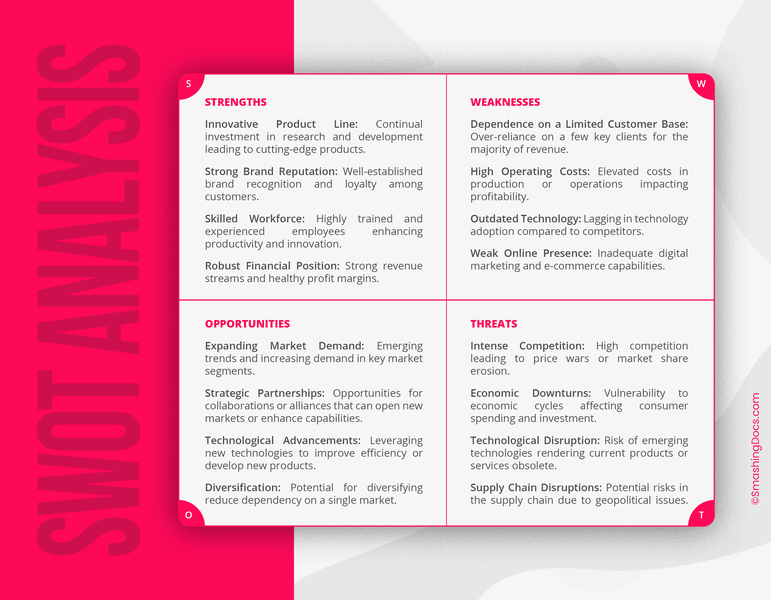
Strategize Like a Pro with Modern SWOT Analysis Templates
Do acute assessments of new initiatives and weight on your business plans with SWOT analysis templates (which also look great in corporate presentations!).

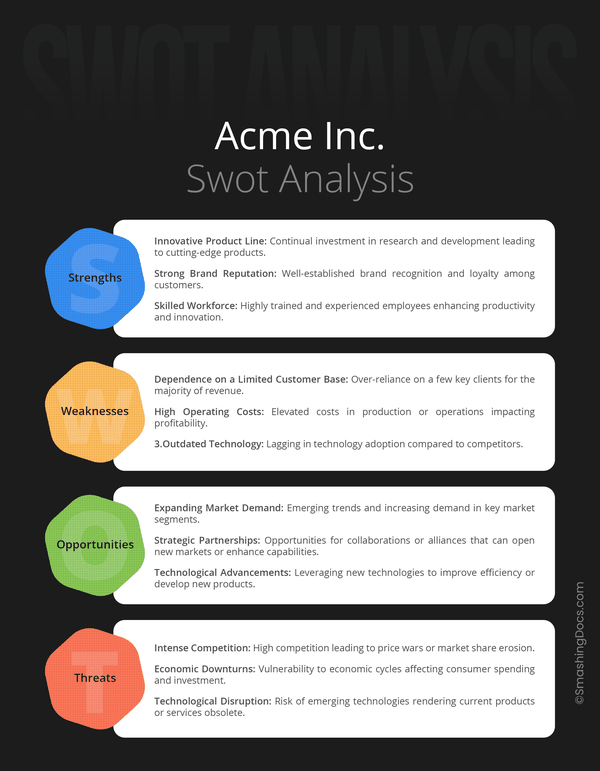
Free Streamlined SWOT Analysis Template
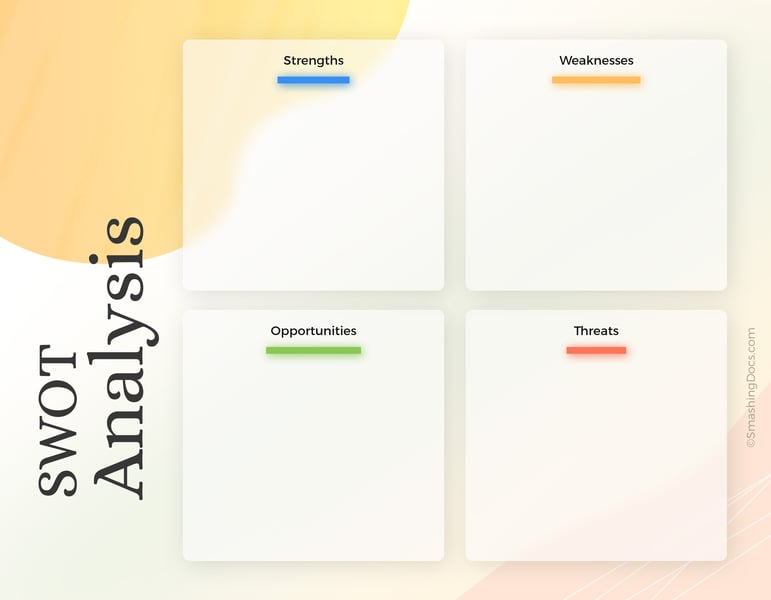
Free Color Cue SWOT Analysis Template
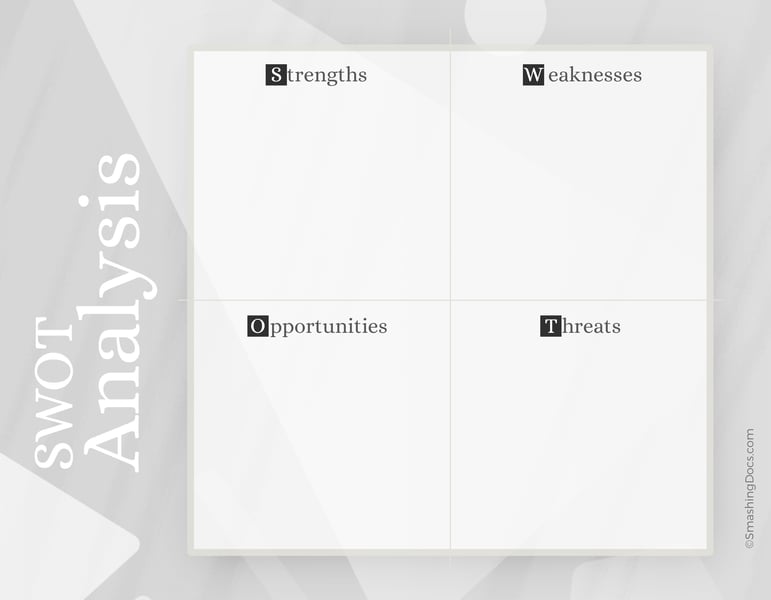
Free Basic Grey SWOT Analysis Template
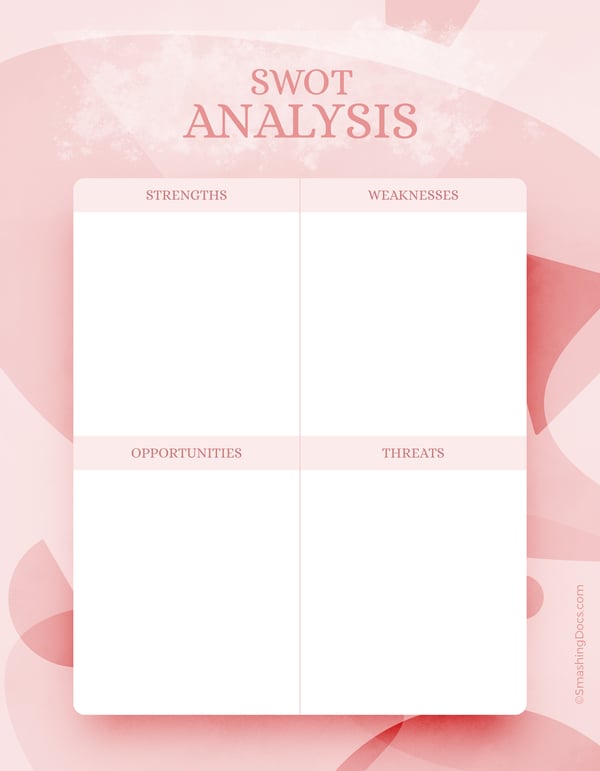
Free Personal Goal SWOT Analysis Template
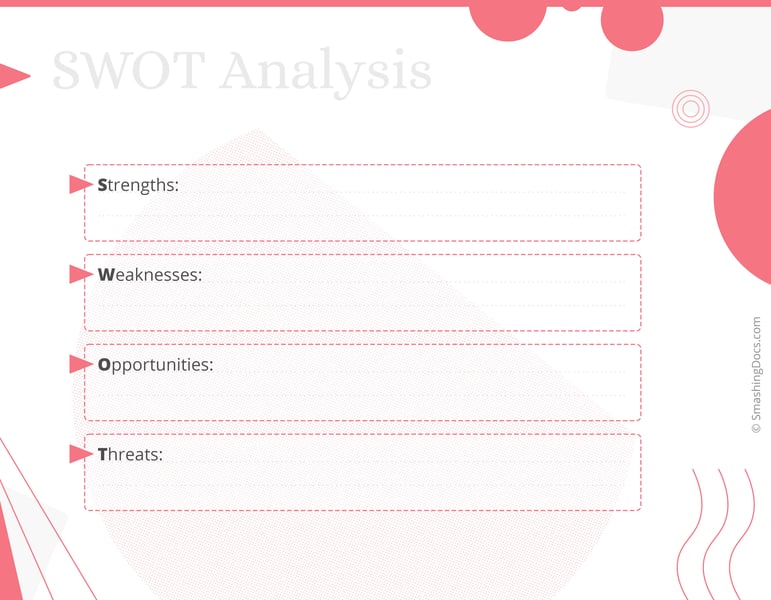
Free Dots and Dashes SWOT Analysis Template
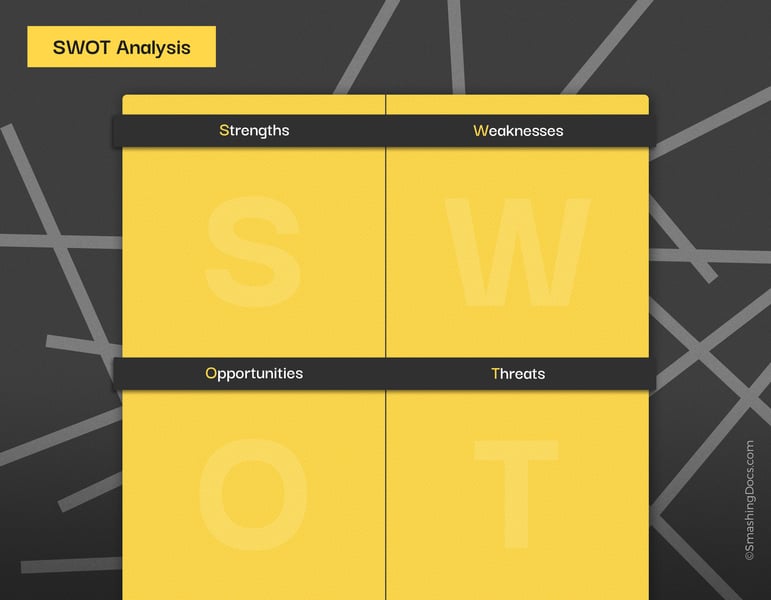
Free Modern SWOT Analysis Template
Your Guide to Organizing a Productive SWOT Analysis Session
Thanks to Stanford researcher, Albert Humphrey, we have the universal SWOT analysis framework — a go-to tool for business decision-making.
The general premises of SWOT analysis are simple: To better evaluate a certain opportunity, draw a quadrant where you list the Strengths, Weaknesses, Opportunities, and Threats, associated with pursuing it. Then decide the best course of action.
But because SWOT analysis is so simple, it often ends up being quite messy. Teams sit down and dump all the ideas in the SWOT template without properly thinking them through. What comes as a result is a several-hour discussion without any productive outcomes.
If you want to make your SWOT analysis sessions more effective, here are several strategies to try.
Begin Your SWOT Meeting with a Statement of the Objective
Before the brainstorming begins, announce the key business objective you’d want to achieve for the discussed project. Select one bounded and realistic objective (not multiple) to frame the upcoming discussion. Write it down atop your SWOT analysis template and then green-light brainstorming. Keeping an objective visible at all times helps participants moderate their ideas and avoid getting too side-tracked in their thinking.
Evaluate Internal Factors First
An organization’s strengths and weaknesses come from internal processes. That’s an area you can better control and optimize. Therefore, you should focus on addressing this first. Go in-depth and spell-out specific strengths and weaknesses.
For example, if you consider your “product development process” a strength, call out your explicit advantages e.g. your own manufacturing facility, recent equipment updates, circular production, etc.
During this past SWOT analysis, you might notice that some factors can be categorized both as strengths and weaknesses. For example, “talent” can be a strength in the sense that you employ competent, engaged people, but it can also be a weakness if you are currently struggling with hiring for some functions (e.g. IT). This is another reason to be granular and drill down the general ideas into more specific statements.
Evaluate External Factors Next
Opportunities and Threats stem from market happenings outside of your direct control such as various macroeconomic factors (e.g. inflation, market instability) and micro-trends (now local competition).
External issues are harder to map since you need to conduct a holistic analysis of your market, competition, and wider economic trends. Likewise, you don’t have direct control over their outcomes.
That said, you can pivot your internal processes to capitalize on a promising new trend or minimize risks due to emerging threats. During your SWOT analysis session focus on discussing:
- Present market trends and their impacts on your business
- Emerging market trends and probable industry developments (based on statistical models)
- Your current degree of adaptability and agility, paired with ways for improving your reaction time
- Competitive landscape and its implications on your operations right now and in the long-term perspective
Your goal is to chart the perimeter of risks and opportunities for your company — and strategize how to improve your company’s reaction to them.
Document All Findings in a SWOT Template
After you’re done with brainstorming, transfer all the main discussion points into your SWOT template. Share it with all the meeting attendants and other department hands. Sharing your SWOT analysis with different stakeholders helps develop a joint understanding of the company’s current goals, future priorities, and possible risks. And as the old adage goes:
“It’s better to be prepared for an opportunity and not have one, than to have an opportunity and not be prepared.”
